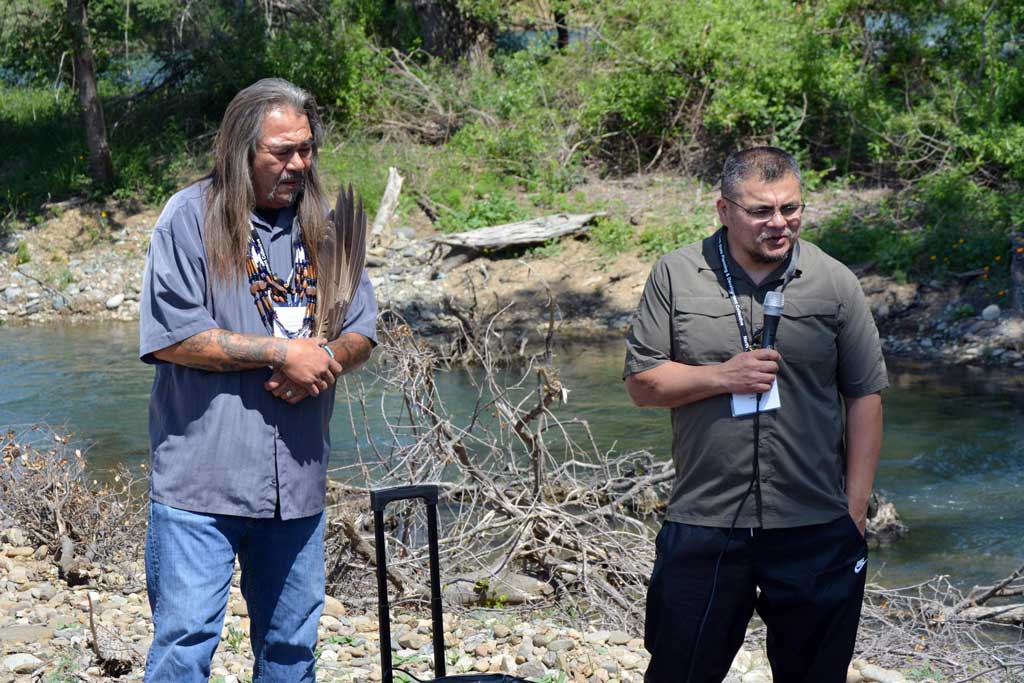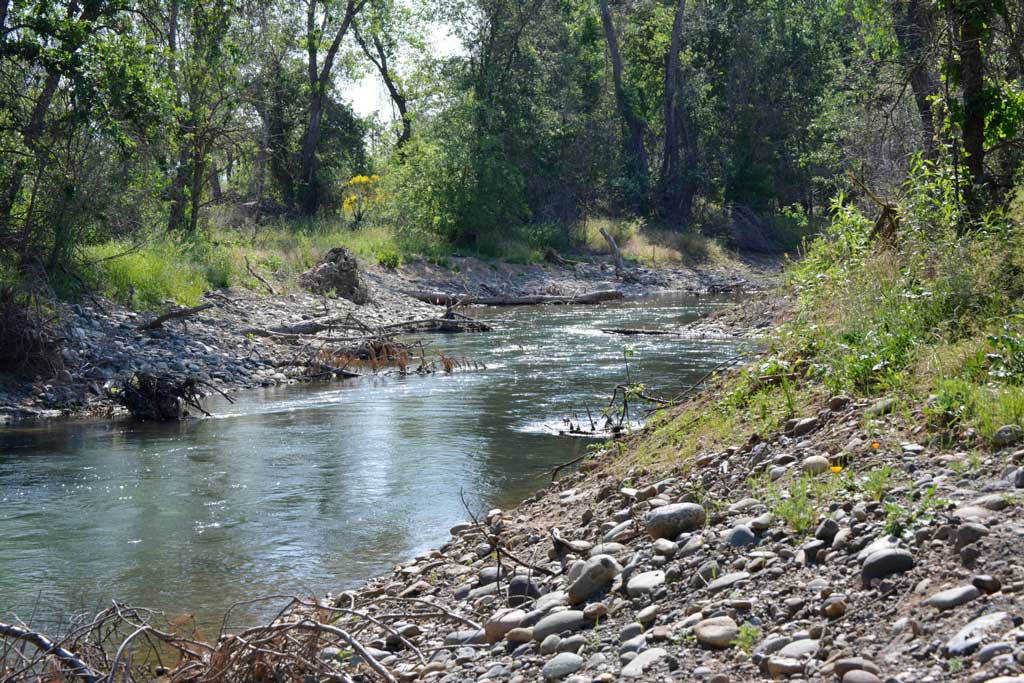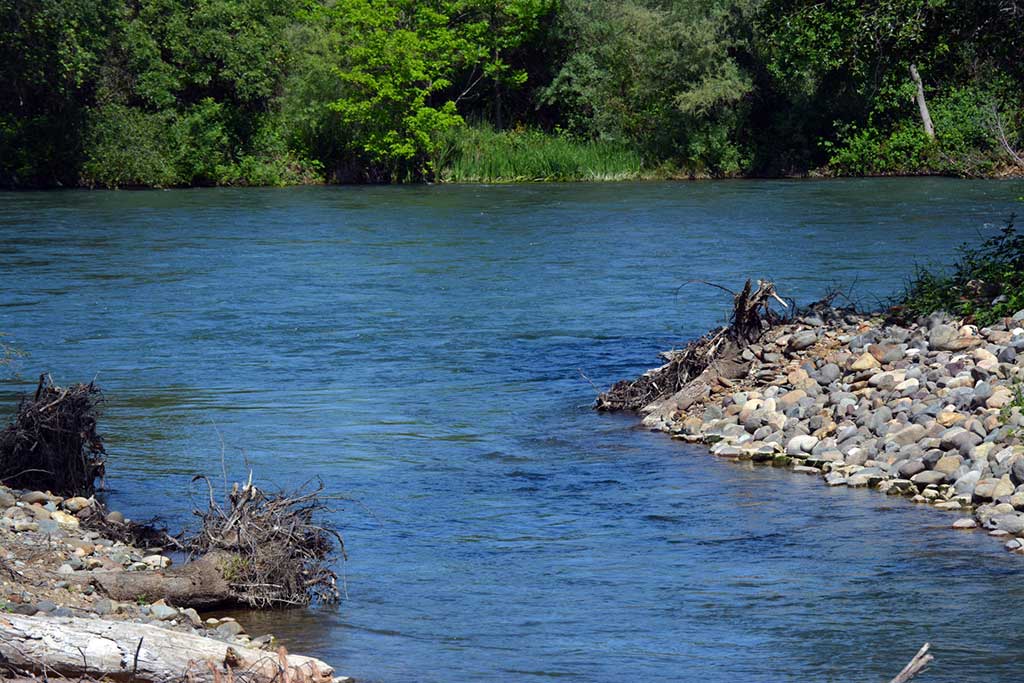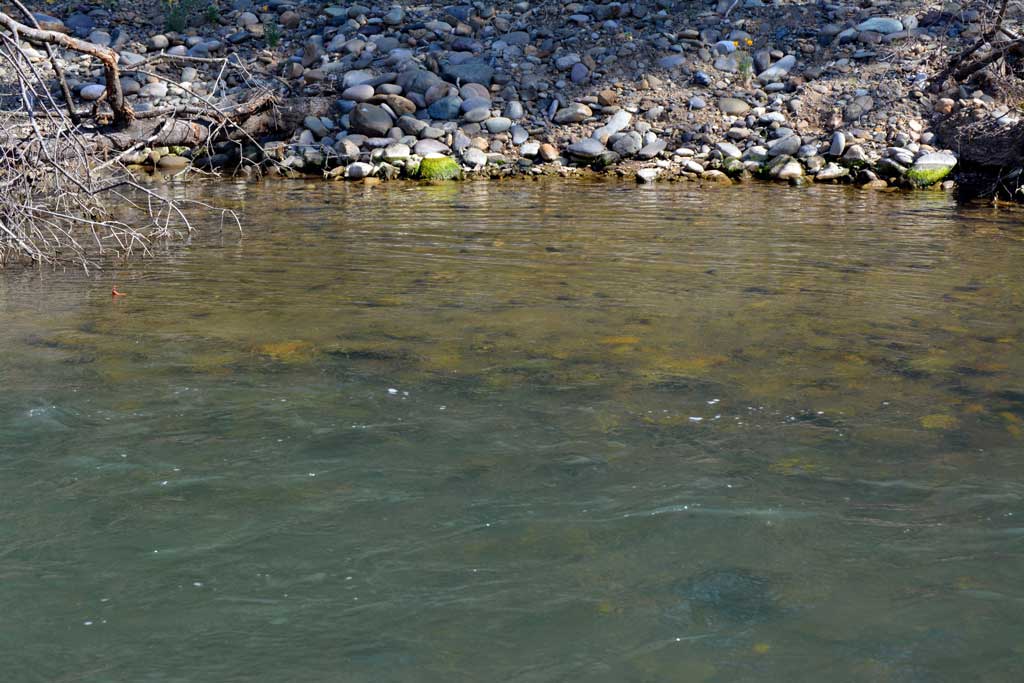New Channel Teeming With Fish Thanks to Impressive Teamwork

Arthur Garcia, Cultural Resource Manager and Tribal Elder of the Wintu Tribe of Northern California, addressed a crowd of roughly 50 people near the bank of the Sacramento River in south Redding.
They were there to celebrate the completion of the Kapusta Open Space Side Channel Project. The nearly half-mile-long channel was designed to provide rearing and spawning habitat for Chinook salmon and made possible thanks to a large-scale collaboration between Chico State Enterprises (managed by the North State Planning and Development Collective), Federal and State agencies, two nonprofit organizations, two Native American Tribes, and the City of Redding.
“When we work together, we can do powerful things,” Garcia said.
Yards away, in the cold, clear channel, spawning activity was observed immediately following construction.



Four distinct runs of Chinook salmon spawn in the Sacramento River but dams that block access to the historic spawning areas are among several factors that have led to a dramatic decline in the winter-run salmon population. The run was classified by the state as endangered in 1989 and by the federal government in 1994. This year, due to low fall-run salmon counts, California’s commercial salmon fishery season is closed.
The Kapusta Open Space Side Channel Project is the first of five restoration projects to be completed under the Central Valley Project Improvement Act, which includes technical assistance from the US Bureau of Reclamation and the US Fish and Wildlife Service. Since 2016, $27 million has been entrusted to the University to invest in salmonid habitat restoration. This is the ninth habitat restoration project Chico State Enterprises has led in that time.
The results of this project are already measurable. Steve Tussing, a fish ecologist with Tussing Ecological Service reported that in a recent snorkel survey they counted nearly 100 Chinook and nearly 200 trout. The channel is teeming with fish thanks to outstanding teamwork.
“It’s a good feeling. It’s good medicine, as we heal the Earth, and we balance it and move forward. Let’s keep going. There’s much more work to be done.”
Chairman of the Yurok Tribe, Joe James
“Collaboration serves as the foundation of our organization and is key to bringing these types of projects to fruition,” said Jason Schwenkler, Executive Director of the North State Planning and Development Collective, Chico State Enterprises. “We are honored to bring together our University, City, State, Federal, and Tribal partners today to celebrate the completion of this important work.”
With so many partners on hand, there were several speakers, including Schwenkler and Garcia and Interim Provost Steve Perez, who just that morning was named the incoming 13th President of Chico State, leading to an extra buzz of excitement in the air.
“This is a great example of the way we want to be regional partners with those who share a common vision as we work to be the hub for the North State for Education, culture, economic development, and environmental stewardship,” Perez said. “This project addresses the University’s strategic priority to advance environmental, social, and economic sustainability in our region.”
Other speakers included Jade Jacobs of River Partners, Aurelia Gonzalez of the Sacramento River Forum, and Nancy Snodgrass of the California Department of Water Resources.
While giving his final remarks beside the channel’s rushing waters, Garcia requested that his counterpart from the Yurok Tribe, Chairman Joe James, have the final word.
“It’s not just a project. It’s not just work. It’s bigger than that,” James said. “It’s a good feeling. It’s good medicine, as we heal the Earth, and we balance it and move forward. Let’s keep going. There’s much more work to be done.”


